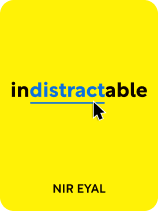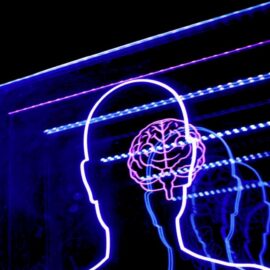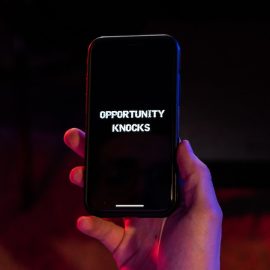

This article is an excerpt from the Shortform book guide to "Indistractable" by Nir Eyal. Shortform has the world's best summaries and analyses of books you should be reading.
Like this article? Sign up for a free trial here .
Are you easily distracted by your cell phone? Do you want to reduce your phone distractions but don’t know where to start?
It can be difficult to reduce the time spent on your phone because, while it can be distracting, your phone can also be a great tool in everyday life. In his book Indistractable, Nir Eyal gives two easy steps to reduce your phone distractions: sorting your apps and going notification-free.
Continue reading for Nir Eyal’s advice on reducing phone distractions.
Reducing Phone Distractions
Your smartphone is probably one of the most—if not the most—distracting things in your life. However, it can also be a valuable tool for staying in touch with people, listening to music, capturing photos, or navigating. Maximize your phone’s use as a tool and reduce phone distractions by first rearranging your apps and then adjusting their settings.
Step 1: Sort Your Apps
Look through the apps on your phone and assess each honestly: Does it benefit you or do you benefit it? Based on your answer, take one of three actions:
1) Remove: Delete unused apps and apps that don’t benefit you or don’t align with your values.
- For example, you might keep a mindfulness app but delete a news app that always makes you feel stressed out.
2) Change: Some apps can be used for traction, but they show up in your life as distractions.
- For example, you may use social media to stay in touch with friends and promote your business, but you also check it when you’re with family, at work, or driving.
For these apps, change where you use them—that is, delete them from your phone and use them exclusively on your computer. When you’re unable to access these apps anytime and anywhere, you’re more likely to use them only during their timebox.
3) Rearrange: At this stage, your phone will have only traction-supporting apps—but even these can be distracting visual cues on a cluttered home screen. Avoid this by making your home screen as minimalist as possible, organizing your apps into three categories:
- Tools: Apps in this category help you with everyday tasks—it might include maps, your calendar, Uber, and so on.
- Goals: Apps in this category help you with things you’d like to spend your time doing, such as mindfulness, exercise, or audiobooks.
- Everything else: Your tools and goals apps should be the only ones on your home screen. Everything else can be organized into folders on the secondary screen. For example, you may have a “Communication” folder that contains your email, messenger, and WhatsApp.
Step 2: Go Notification-Free
The second part of diminishing your phone’s distractions is cutting out the temptation to look at it in the first place. Most people look at their phones when they receive a notification because it grabs their attention with a ding, vibration, or lit-up screen. By disabling notifications, you eliminate these external triggers.
Timebox 30 minutes in your schedule to readjust your app settings—be sure to pay attention to both the audio and visual settings, as both can interrupt your focus.
- Audio notifications are especially distracting because they can grab your attention even if your phone is face down or in another room. Think about which of these apps truly needs your attention at any moment, depending on your life and work. For example, a student may keep sound activated only for phone calls, but a small business owner might keep her email sound activated so she can immediately check incoming orders.
- Visual notifications only work when you can see your phone, but you can adjust how prominent they are. You may set your essential apps to light up your home screen when notifications come in and adjust your less important apps to only display a small red bubble when there are notifications to check.

———End of Preview———
Like what you just read? Read the rest of the world's best book summary and analysis of Nir Eyal's "Indistractable" at Shortform .
Here's what you'll find in our full Indistractable summary :
- How to become indistractable in a world full of distractions
- Why your schedule should be based on your values instead of tasks
- How to start driving your life instead of letting its distractions drive you






